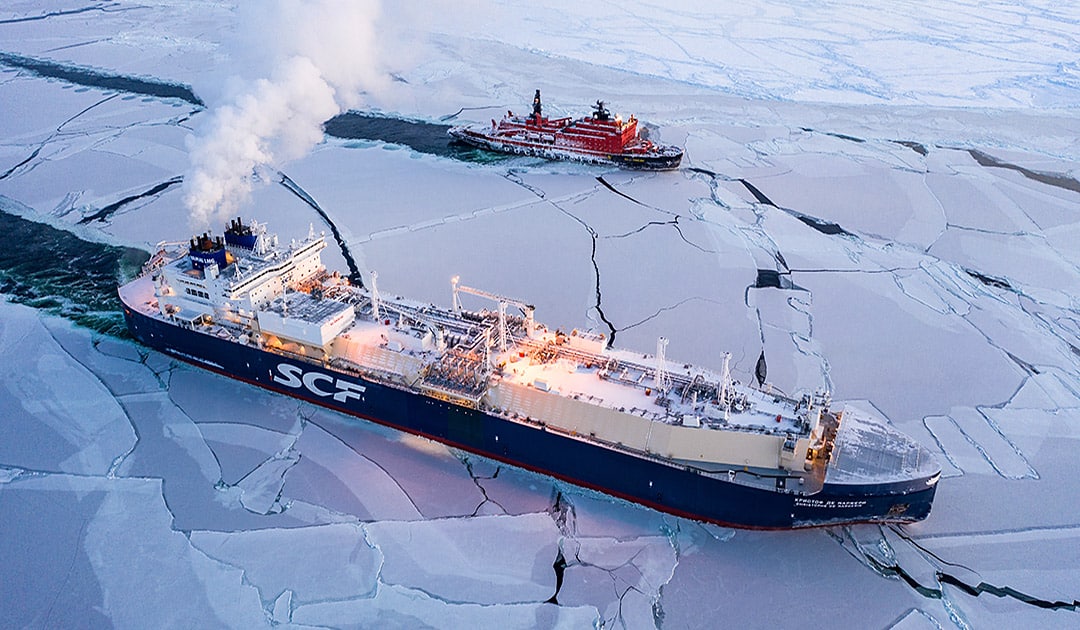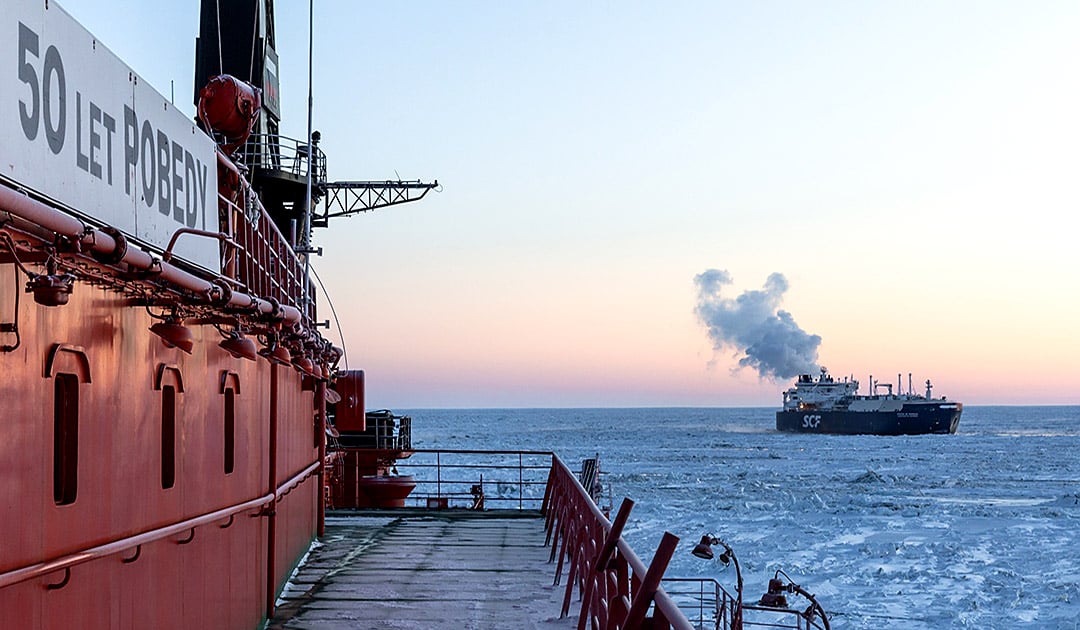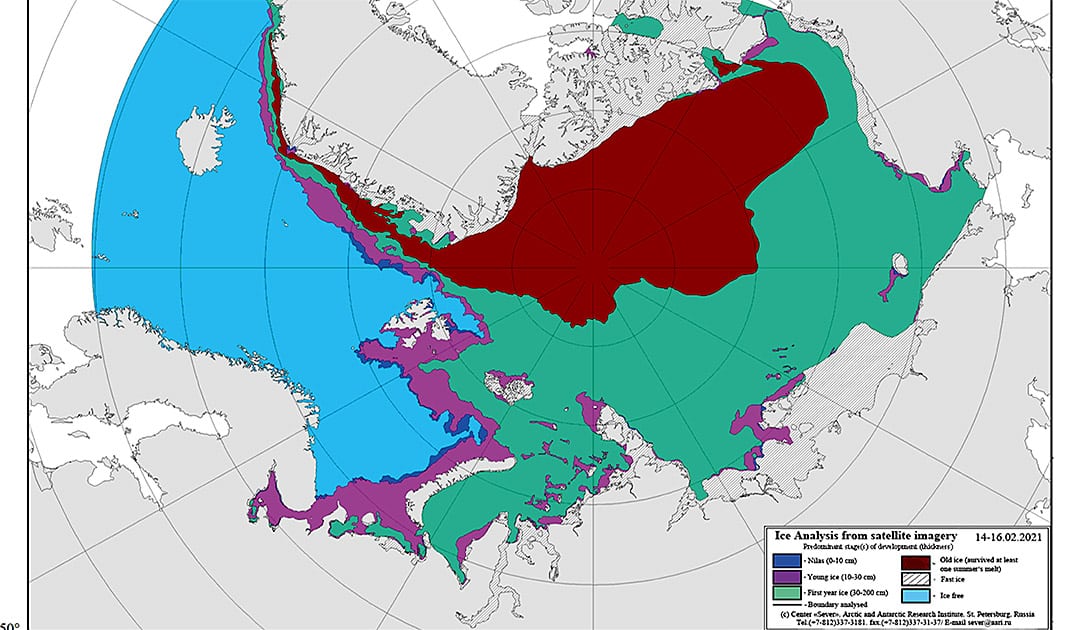
This is the first time in history that a cargo ship has sailed through the icy Northeast Passage in both directions in January and February. The voyage of the LNG carrier “Christophe de Margerie” from Sabetta to the Chinese city of Jiangsu and, after unloading, empty back to Sabetta took place through heavy sea ice. The greatest ice thickness is reached at the end of February and in the month of March. Therefore, the “Christophe de Margerie” was escorted by an icebreaker on the way back to Sabetta.

The voyage through the wintry Northeast Passage also served as a test of how this route could be managed in the winter months. The LNG tanker “Christophe de Margerie” had departed in Sabetta on January 5. The journey to Cape Dezhnev took 10 days and 21 hours. The ship covered a distance of 2,474 nautical miles. Throughout the Northern Sea Route, the “Christophe de Margerie” navigated without an icebreaker convoy and maintained a safe speed, taking into account ice conditions and limited visibility.
After unloading, the “Christophe de Margerie” left the Chinese port of Jiangsu on January 27 and sailed through the Bering Strait a few days later. On February 7, the “Christophe de Margerie” reached the waiting nuclear icebreaker “50-Let-Pobedy” at Cape Dezhnev. The icebreaker had the task of escorting the LNG carrier on its ’empty run’ through the even more heavily iced Northeast Passage. On their return journey from Cape Dezhnev to Sabetta, the convoy took 11 days and 10 hours to cover the 2,500 nautical miles along the North Sea route, where the ships entered the port of Sabetta at 16:30 on February 19, 2021.

Sovcomflot, owner of the “Christophe de Margerie”, operates 15 LNG carriers, all with ice class Arc7. The 15 LNG carriers are based on the ‘Double Acting Ship Concept’ which can be operated independently without icebreaker escort along the Northern Sea route. By choosing a reduced keel instead of a bulbous icebreaker keel, the vessel can sail faster in open water and light ice (up to 1.5 m thick). In thicker ice, the LNG carrier works aft, which means the icebreaker moves backwards and can thus break ice up to 2.1 metres thick with the icebreaker hull.
Heiner Kubny, PolarJournal





